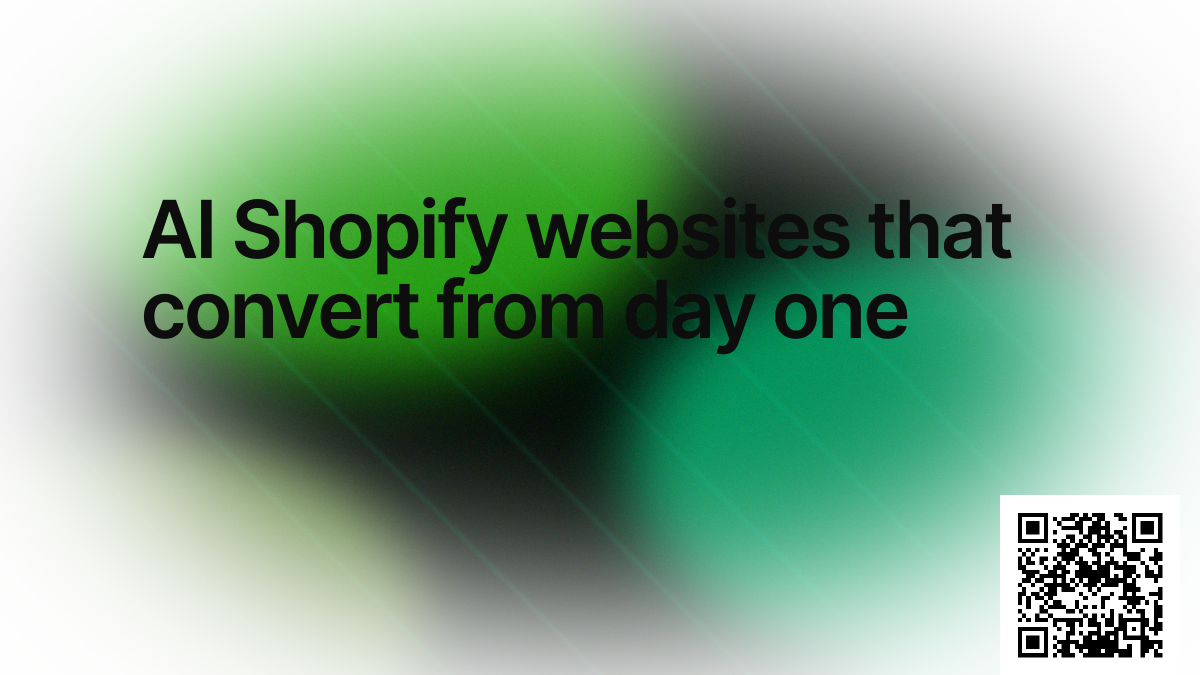AI Shopify websites that convert from day one

Why Shopify merchants need AI speed
AI Shopify Websites promise overnight store launches, yet most organizations still manage Shopify like a waterfall build. MyDomAI merges domain analytics, an AI Website Builder, and conversion instrumentation so Shopify becomes a living commerce engine. The platform grades domain options, forecasts margin potential, and drafts product storytelling before the first theme edits occur. By aligning discovery, creative, and infrastructure from the start, teams capture search demand and impulse buys without burning runway.
Selecting domain names that win
Domain intelligence aggregates registrar feeds, auction comps, and vertical trends to reveal where a Shopify concept has the best chance of ranking. Teams learn how each AI domain name performs for acquisition, retention, and brand protection before committing to a purchase. Scorecards display CPC, margin assumptions, regulatory flags, and partnership opportunities so executives treat domains like inventory with measurable yield. If MyDomAI detects an adjacent keyword cluster, it queues landing pages, mini sites, or redirect logic to extend authority. The process converts speculative names into working assets assigned to revenue goals and campaign owners.
Building storefronts with Website Builder AI Prompts
Website Builder AI Prompts generate Shopify Online Store 2.0 sections, metafield content, and checkout microcopy in one pass. Designers leverage Web Design AI Prompts to decide hero hierarchy, media placements, and trust markers that align with each buyer segment. The AI Website Builder outputs Liquid templates, pre rendered HTML, and HTML code snippets for embed widgets like lookbooks or bundle calculators. Creative teams also receive AI enhanced banner ads, email modules, AI content Iframe embeds, and short form video scripts that match the new storefront narrative. Because MyDomAI tracks change history, compliance officers can review copy, pricing, and incentive logic before a page moves to production. Developers download asset bundles that respect Shopify theme architecture while still mapping to WordPress or static reuse when campaigns expand.
Automating merchandising and SEO
Real time feeds pull product availability, pricing, and merchandising data into the same place as keyword and LLM insights. AI SEO GEO dashboards monitor how Shopify collections rank across Google, Bing, Amazon, and the top twenty global AI LLMs. If a new question spikes in an LLM response, the AI Website Builder drafts comparison tables, bundle suggestions, or warranty explanations automatically. Search automation updates metadata, structured data, and internal links while respecting brand guardrails and performance budgets. Merchandisers receive alerts when to reorder inventory, adjust bundles, or spin up limited drops to match demand spikes surfaced by AI.
Connecting checkout to every channel
Launch Kits export Shopify theme files, Hydrogen components, and static renders so stores operate across hosted and headless architectures. Operators can drop the same assets into cPanel environments, Vercel front ends, or Netlify landing collections without refactoring templates. Affiliate teams receive AI enhanced banner ads, influencer briefs, and shoppable iframe embeds, each tagged for attribution and compliance. Retail partners can embed mini catalog experiences on their sites using the HTML code snippets generated by MyDomAI. Seasonal campaigns can spin up AI Static Websites that mirror Shopify inventory while directing checkout back to the main cart. Paid media channels inherit headline testing matrices and creative derivatives so campaigns remain synchronized across social, display, and search.
Coordinating teams and partners
MyDomAI provides role based workspaces for merchandising, marketing, finance, and operations teams managing the same store. Stakeholders comment inline on prompts, creatives, and inventory decisions, then approve releases through structured workflows with audit trails. Vendors and agencies access governed sandboxes, enabling them to deploy AI prompts or HTML assets without touching sensitive financial data. Integration with Slack, Teams, and email keeps every milestone visible so projects move from ideation to launch within the set sprint cadence. The collaboration model ensures AI prompts to build entire websites stay aligned with procurement, compliance, and customer support requirements.
Measuring commerce impact
Dashboards consolidate revenue, margin, and retention metrics by domain, campaign, and channel. Finance teams trace performance from paid media spend to checkout, validating which AI Shopify websites deserve bigger budgets. Attribution models integrate with Shopify analytics, Google Analytics, Stripe, and ERP systems so forecasting stays precise. MyDomAI recommends upsell sequences, shipping incentives, or loyalty offers based on real conversion deltas observed across store segments. Closing the loop turns every domain plus storefront pair into a measurable, repeatable asset.
Roadmap for Shopify operators
The roadmap introduces AI enhanced conversion optimization that adapts to flash sales, subscriptions, and wholesale programs. Upcoming features include localized prompt packs, inventory aware storytelling, and tighter connections with CRM and marketing automation platforms. MyDomAI will roll out analytics that compare search performance with Web Design LLM visibility so operators can reallocate spend instantly. Future releases also extend the AI Website Builder into retail media templates, social commerce scripts, and kiosk ready experiences. Each enhancement deepens the link between domain selection, creative execution, and the revenue that Shopify leaders report back to investors.
